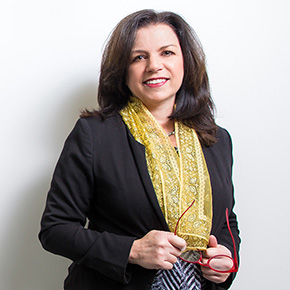It’s been more than 35 years since designer Milton Glaser created (and donated) the iconic “I (heart) NY” logo, which has come to represent the universal fondness of residents and tourists alike for New York City. Since then, cities across the nation have invested millions to create winning brands for themselves.
Whether you’re a bustling metropolis or tiny burg, successfully defining and promoting your city’s brand can have enormous benefits by attracting tourists and talent, generating buzz and buy-in, and drawing investment. Just the first wave of the “I (heart) NY” campaign alone is credited with generating more than $28 million in economic activity.
But a failed or controversial municipal branding campaign can be an expensive public embarrassment. The cost of a branding campaign can raise eyebrows among more skeptical taxpayers. Melbourne, Australia, reportedly spent a stunning $625,000 on its logo redesign. And a few years ago, a city councilman from Newcastle, Wash., said the city council, “owes an apology to our citizens for wasting $191,000 of their tax dollars” on a failed branding effort.
Want to define your city’s brand the right way and put it on the map? Here are seven ways to start:
1. Inventory your assets
What makes your city distinct from anyplace else? Assets span the gamut from signature foods like Chicago deep-dish pizza and Philly cheesesteak, to historical and cultural sites like the Alamo or Graceland, to major industries like the auto industry that gave rise to Detroit’s nickname as the Motor City.
Other important assets are unique annual events like Tampa’s Gasparilla Pirate Festival, and even the vibe of your downtown or entertainment district, such as Miami’s famous South Beach.
2. Keep it real
Branding is not about pretending to be something you’re not. It’s about revealing, packaging and promoting awareness about what you intrinsically are. Asheville and Santa Fe both have established their positions as cities with a thriving and unique arts scene.
Austin has staked its reputation as the “Live Music Capital of the World” and its now-famous “Keep Austin Weird” slogan speaks to its eclectic mix of people, culture and entertainment. Don’t try to be all things to all people. Put your city’s real face forward, and those who want what you have to offer will be drawn in.
3. Focus your message
Especially if you’re a small city, focus your energies on a single reason to visit. It may be great hiking trails, a top bass fishing spot, the most authentic Southern greens and grits, or a famously good Bluegrass scene. This increases the chances that people who are interested in that find you in a Google search.
Mount Dora is a great example of a small city that draws visitors for its Craft Fair and then wins them over with its other local charms.
4. Create a sense of place
Innovative communities are using placemaking to reimagine public spaces in ways that promote cultural, social, behavioral and economic connections. Bourbon Street and Times Square are quintessential examples of placemaking, which help to define those cities’ brands. But parks, town centers, outdoor markets, lakes and even streets can have a powerful, positive placemaking effect.
In Florida, the branding of the City of Tavares as “America’s Seaplane City” has been an economic and community-building success. What are the common public spaces that can serve an iconic purpose for your city and how can you amplify their effect with organized events?
5. Deliver the experience your brand promises
Although a great slogan can help to focus and galvanize awareness of what makes a city unique and exceptional, it would be a mistake to think that branding is merely a slogan and a logo. Think of branding as a promise that you deliver through an experience.
What is the experience of your city’s brand? Friendly? Relaxed? Bike-friendly? Exciting? Eclectic? Easy to navigate? How can you add touch points that make that experience more reliable?
6. Involve the community
A sustainable branding effort requires broad buy-in. Don’t create your city’s brand in a vacuum or a boardroom. Create a process to involve influential community leaders and residents at all levels, including small business owners, and they will become enthusiastic brand ambassadors.
Once in market, look for and promote ways for all stakeholders to benefit from tying into the city brand.
7. Give it legs
Once you define your city’s brand, extend and support it with a comprehensive, ongoing and multi-faceted strategy.
Dallas’s “Big Things Happen Here” campaign is a good example of a branding effort with diverse and sustained components, from experiential elements that citizens and visitors can interact with (physical displays in which people form the “I” in “Big”) to live events and heavy social media engagement to an online store that sells branded products to live events.
A strong brand identity can yield a big and long-term return on investment for a city. To ensure that kind of ROI, start by defining and refining what makes your city the special place it is.
This feature was originally published in the Florida League of Cities’ Quality Cities magazine, Jan/Feb 2015.

